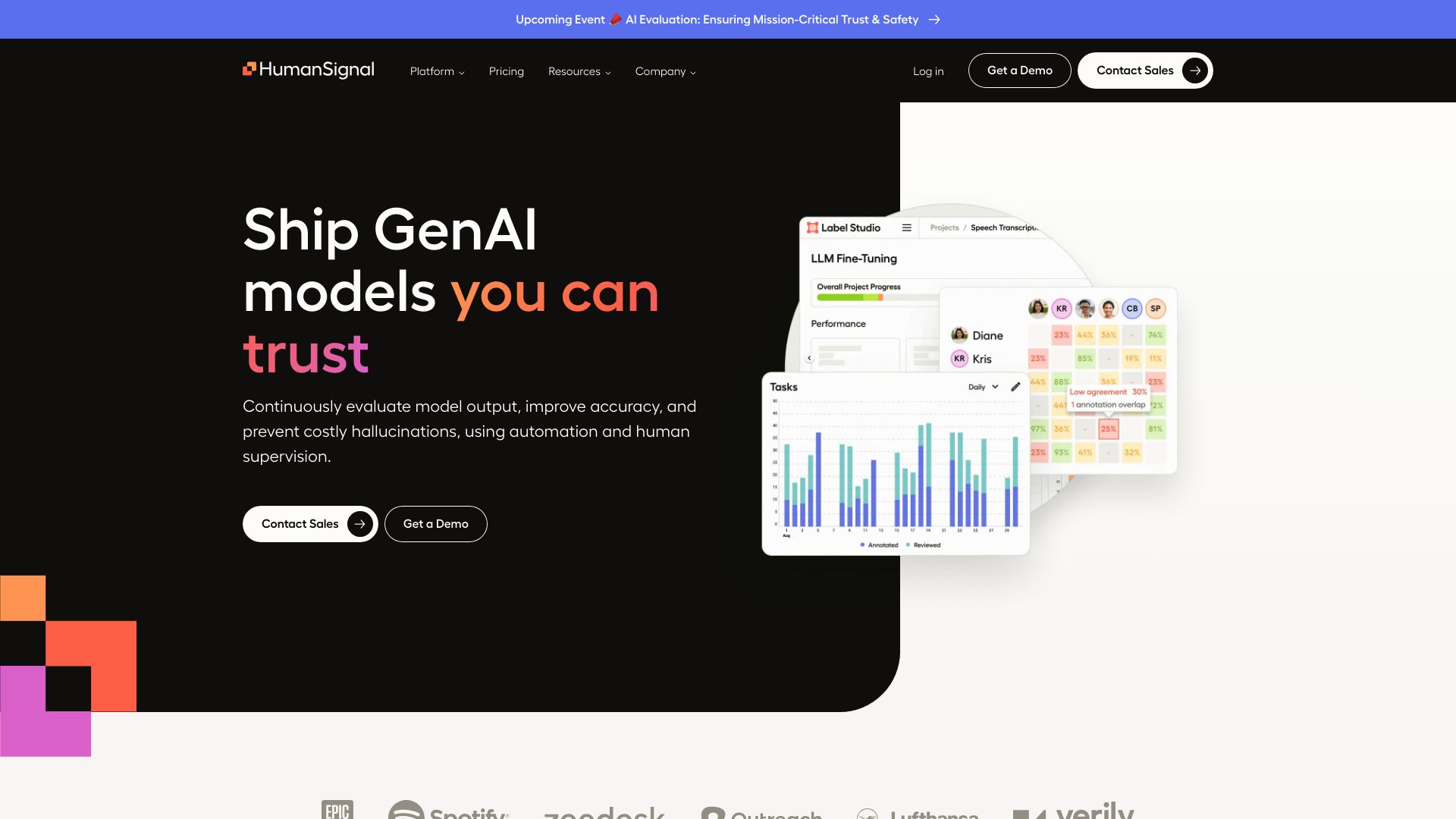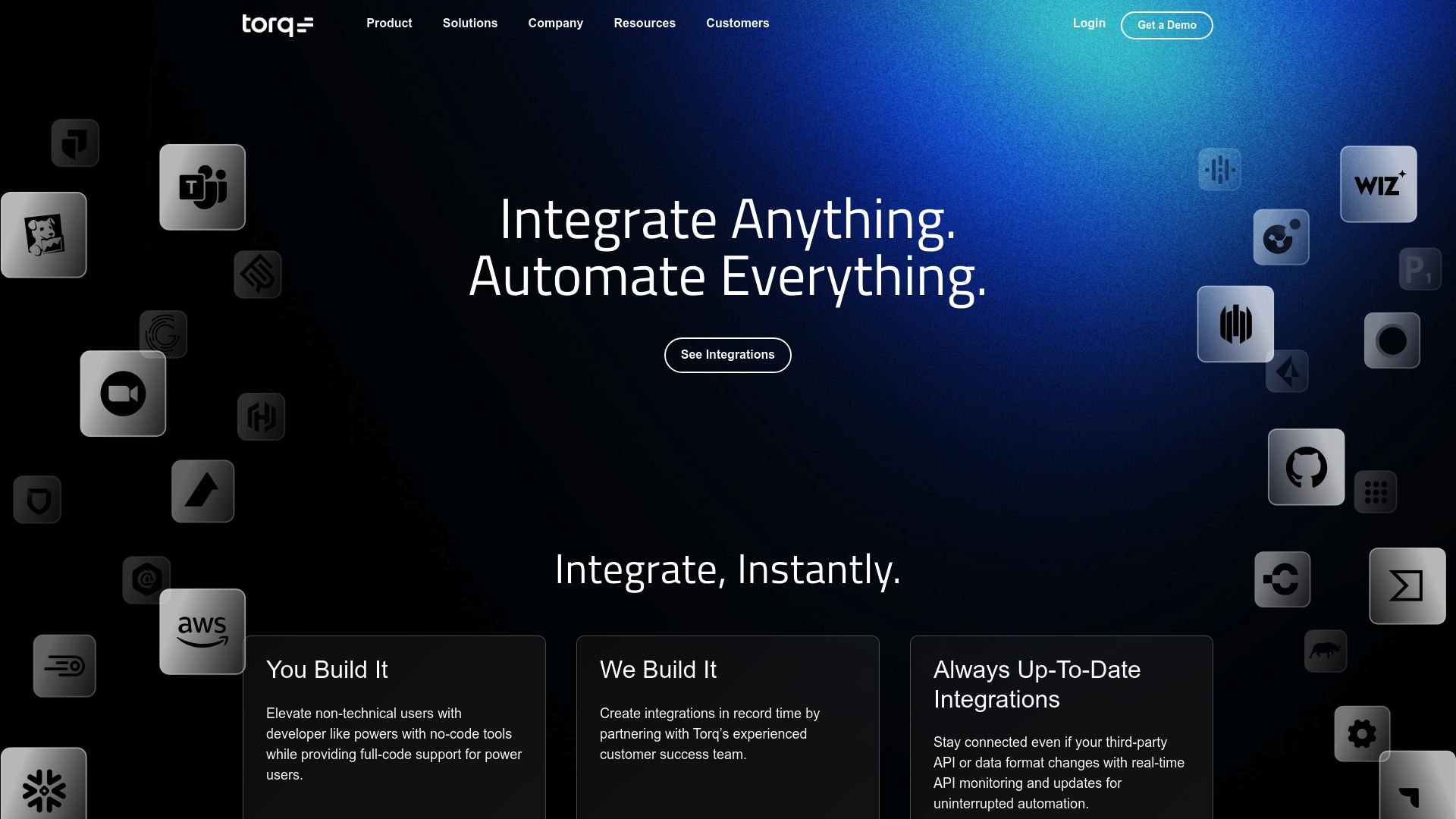Adala vs. Torq Hyperautomation: AI Automation Showdown
AI-powered automation transforms industries, but choosing the right solution can be challenging. This comparison between Adala vs. Torq Hyperautomation explores Adala’s data labeling framework, Torq’s security automation platform, and SmythOS’s versatile AI operating system. We examine core features, use cases, and key differentiators to help you select the best tool for your AI automation needs.
Whether you’re a developer seeking flexible AI agents, a security professional automating workflows, or a business leader looking for a comprehensive AI solution, this guide provides valuable insights to inform your decision-making process.
Adala Overview
Adala revolutionizes data labeling with its open-source framework for building autonomous AI agents. Designed for developers and data scientists, Adala empowers users to create specialized agents that learn and improve through continuous interaction with data and human feedback.


At its core, Adala leverages large language models like GPT-3 as the runtime for executing tasks and skills. This foundation allows agents to acquire specialized capabilities such as text classification, summarization, and question-answering. The platform’s modular architecture encourages extensibility, enabling users to create custom skills tailored to their specific data labeling needs.
Adala leverages large language models like GPT-3 as the runtime for executing tasks and skills. This foundation allows agents to acquire specialized capabilities…
Adala’s strength lies in its ability to combine AI power with human expertise. Agents learn from labeled ground truth datasets provided by users, allowing for guided training processes. The system incorporates a tight feedback loop where agents can request human input on their predictions, ensuring high-quality results while continuously refining their skills. This approach strikes a balance between automation and human oversight, critical for maintaining accuracy in data labeling tasks.
Adala’s strength lies in its ability to combine AI power with human expertise. Agents learn from labeled ground truth datasets provided by users…
While Adala offers powerful capabilities for autonomous data labeling, it may present a steeper learning curve for non-technical users. The platform’s focus on code-based interactions and APIs could limit accessibility for those seeking no-code solutions. Additionally, as an open-source project, Adala relies on community contributions for ongoing development and support, which may impact the availability of enterprise-grade features or dedicated customer service compared to commercial alternatives.
Torq Hyperautomation Overview
Torq Hyperautomation delivers an AI-powered platform for enterprise-grade security operations. The system connects diverse security tools to enable autonomous threat remediation and complex process orchestration at scale.


Torq’s platform centers on customizable workflows that automate security tasks and free up professionals for strategic work. Key components include triggers that initiate workflows based on events, modular steps for specific actions, and variables to store organizational data. Extensive third-party integrations allow seamless connections during workflow execution.
Torq’s platform centers on customizable workflows that automate security tasks and free up professionals for strategic work.
The system provides automated case management to handle security events from creation to resolution. Workspaces enable resource grouping with role-based access for streamlined collaboration. This comprehensive approach aims to enhance overall security posture while reducing manual burdens.
Torq excels at connecting disparate security tools but lacks some advanced AI agent capabilities. The platform focuses on security automation rather than general-purpose AI development. While powerful for security operations, it may not suit users seeking a flexible AI agent builder for diverse applications beyond cybersecurity.
For organizations prioritizing security automation, Torq offers a robust solution. However, those needing versatile AI agents for varied use cases may find more suitable options elsewhere. Torq’s specialized focus delivers high value for its target market but comes with inherent limitations in broader AI development scenarios.
Feature Comparison
Adala vs. Torq Hyperautomation present distinct approaches to AI-powered automation, with notable differences in their core capabilities and target use cases. Adala focuses on creating autonomous data labeling agents using large language models, while Torq specializes in security operations automation.
In terms of core components, Adala provides a flexible framework for building custom AI agents with modular skills and integrations. However, it lacks a visual builder or no-code editor, requiring more technical expertise to utilize effectively. Torq, on the other hand, offers a visual workflow builder for creating security automation processes, making it more accessible to non-developers.
Security features highlight another key difference. Torq Hyperautomation emphasizes robust security capabilities, including data encryption, OAuth support, and IP controls — critical for its enterprise security focus. Adala’s documentation does not explicitly mention these security features, potentially limiting its suitability for handling sensitive data in regulated environments.
SmythOS stands out by combining the strengths of both platforms while addressing their limitations. It offers a visual builder and no-code options like Torq, but with the flexibility to create diverse AI agents like Adala. SmythOS also provides comprehensive security features, multimodal capabilities, and extensive deployment options, positioning it as a more versatile and user-friendly solution for businesses seeking advanced AI automation across various domains.
| Adala | Torq Hyperautomation | SmythOS | |
|---|---|---|---|
| CORE FEATURES | |||
| Hosted Agents (Dev, Production) | ❌ | ✅ | ✅ |
| Visual Builder | ❌ | ✅ | ✅ |
| No-Code Options | ❌ | ✅ | ✅ |
| Explainability & Transparency | ✅ | ❌ | ✅ |
| Debug Tools | ❌ | ✅ | ✅ |
| Multimodal | ❌ | ✅ | ✅ |
| Problem-Solving Capabilities | ✅ | ❌ | ✅ |
| Multi-Agent Collaboration | ❌ | ✅ | ✅ |
| Human-AI Interaction | ✅ | ❌ | ✅ |
| Audit Logs for Analytics | ❌ | ✅ | ✅ |
| SECURITY | |||
| Data Encryption | ❌ | ✅ | ✅ |
| OAuth | ❌ | ✅ | ✅ |
| IP Control | ❌ | ✅ | ✅ |
| COMPONENTS | |||
| Huggingface AIs | ❌ | ❌ | ✅ |
| Zapier APIs | ❌ | ❌ | ✅ |
| All other APIs, RPA | ❌ | ❌ | ✅ |
| Logic | ✅ | ❌ | ✅ |
| Data Lakes | ❌ | ✅ | ✅ |
| DEPLOYMENT OPTIONS (EMBODIMENTS) | |||
| Deploy as API | ✅ | ❌ | ✅ |
| Deploy as Webhook | ❌ | ✅ | ✅ |
| Staging Domains | ❌ | ✅ | ✅ |
| Production Domains | ❌ | ❌ | ✅ |
| API Authentication (OAuth + Key) | ❌ | ❌ | ✅ |
| Deploy as Site Chat | ❌ | ✅ | ✅ |
| Deploy as Scheduled Agent | ❌ | ❌ | ✅ |
| Scalability | ✅ | ❌ | ✅ |
| DATA LAKE SUPPORT | |||
| Sitemap Crawler | ❌ | ❌ | ✅ |
| YouTube Transcript Crawler | ❌ | ✅ | |
| URL Crawler | ❌ | ❌ | ✅ |
| PDF Support | ❌ | ❌ | ✅ |
| Word File Support | ❌ | ✅ | ✅ |
| TXT File Support | ❌ | ✅ | ✅ |
Best Alternative to Adala and Torq Hyperautomation
SmythOS emerges as the superior alternative to Adala and Torq Hyperautomation, offering a comprehensive AI automation platform that combines the strengths of both while addressing their limitations. Our platform provides an intuitive visual builder and no-code options, making it accessible to users of all technical backgrounds. SmythOS excels in creating diverse AI agents with the flexibility of Adala and the ease of use of Torq.
SmythOS emerges as the superior alternative to Adala and Torq Hyperautomation, offering a comprehensive AI automation platform that combines the strengths of both while addressing their limitations.
We offer unparalleled versatility in deployment options, allowing users to implement AI solutions as APIs, webhooks, site chats, scheduled agents, and more. This flexibility ensures seamless integration into existing workflows and systems. Our platform supports a wide range of data formats and sources, including PDFs, Word documents, and various web crawlers, enabling comprehensive data utilization for AI applications.
SmythOS prioritizes security and scalability, crucial aspects for enterprise-level deployments. We provide robust data encryption, OAuth support, and IP control features, ensuring your AI solutions meet stringent security requirements. Our platform scales effortlessly to accommodate growing business needs, supporting multi-agent collaboration and complex problem-solving capabilities.
Unlike Adala and Torq Hyperautomation, SmythOS offers a complete suite of features for AI development and deployment. We provide extensive integration options with APIs, RPA tools, and popular AI models, allowing users to leverage cutting-edge technologies in their solutions. Our platform also includes advanced debugging tools, audit logs, and analytics, ensuring transparency and continuous improvement of AI agents.
By choosing SmythOS, you gain access to a powerful, user-friendly platform that empowers you to create sophisticated AI solutions for virtually any use case. We combine the best aspects of Adala’s AI agent creation and Torq’s automation capabilities, while offering additional features and flexibility that set us apart as the top choice for businesses seeking to harness the full potential of AI automation.
Conclusion
Adala and Torq Hyperautomation offer specialized solutions for data labeling and security automation respectively. Adala provides an open-source framework for building AI agents that excel at data labeling tasks, leveraging large language models and human feedback. Torq focuses on enterprise-grade security operations, offering customizable workflows and extensive integrations for automating security processes.
While both platforms deliver value in their niches, SmythOS emerges as a more versatile and comprehensive solution for AI-powered automation across various domains. We combine the strengths of visual workflow building, like Torq, with the flexibility to create diverse AI agents, similar to Adala. Our platform goes further by offering multimodal capabilities, extensive deployment options, and robust security features essential for enterprise use.
SmythOS stands out with its intuitive drag-and-drop interface, pre-built API integrations, and support for a wide array of AI models. This approach democratizes AI development, making it accessible to both technical and non-technical users. Our platform’s ability to orchestrate multi-agent systems, coupled with versatile deployment options—including as APIs, chatbots, or scheduled agents—provides unparalleled flexibility for businesses seeking to integrate AI into their operations.
Create a free SmythOS account today and experience the power of our comprehensive AI operating system. Whether you’re looking to automate complex workflows, develop chatbots, or deploy AI-driven applications, SmythOS offers the tools and capabilities to bring your ideas to life quickly and efficiently. Join us in revolutionizing how businesses harness AI technology and drive innovation across industries.
Last updated:
Disclaimer: The information presented in this article is for general informational purposes only and is provided as is. While we strive to keep the content up-to-date and accurate, we make no representations or warranties of any kind, express or implied, about the completeness, accuracy, reliability, suitability, or availability of the information contained in this article.
Any reliance you place on such information is strictly at your own risk. We reserve the right to make additions, deletions, or modifications to the contents of this article at any time without prior notice.
In no event will we be liable for any loss or damage including without limitation, indirect or consequential loss or damage, or any loss or damage whatsoever arising from loss of data, profits, or any other loss not specified herein arising out of, or in connection with, the use of this article.
Despite our best efforts, this article may contain oversights, errors, or omissions. If you notice any inaccuracies or have concerns about the content, please report them through our content feedback form. Your input helps us maintain the quality and reliability of our information.
